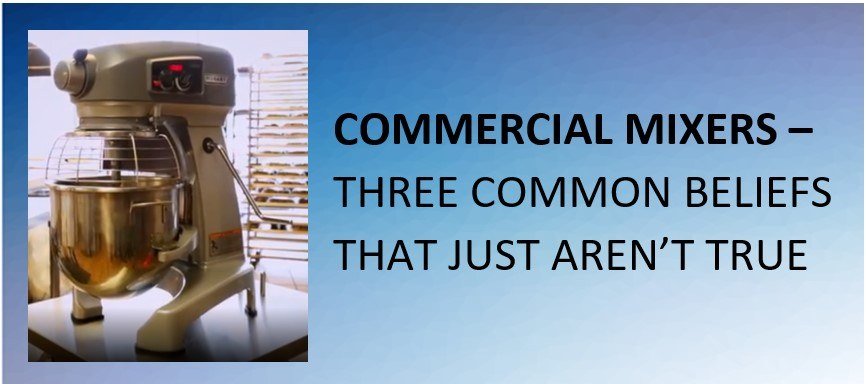Whether you use your commercial mixer for continuous use or the occasional batch, it’s important to have the right equipment for the job. If your mixer isn’t sized right, it can unfavorably affect your equipment’s performance and increase your costs. Being aware of these common beliefs can help you make a better selection for the mixing tasks performed and ensure years of performance from your mixer in your institutional kitchen.
BELIEF #1: A Larger Motor Means More Power
With commercial mixers, it’s important to remember that the listed horsepower doesn’t provide a complete picture of the expected performance. More clearly stated; having a larger motor doesn’t mean that a mixer will provide you with more power. Instead, be sure to review the mixer’s efficiency and torque, which impact the ability to drive the agitator into the bowl. This assures that product is mixed completely. The drive system of a mixer is also a key factor here. For example, the Hobart® Legacy® mixers with Variable Frequency Drive use a variable-speed motor and a single gear train to regulate the frequency and voltage of the electric current to the motor. This drive regulates the mixer speed so that it will increase or decrease to put the right amount of torque into the bowl to make sure ingredients are consistently mixed every time. If a mixer needs a larger motor to drive the same amount of torque as a smaller motor would drive, too much energy is being used to accomplish the task. When this is happening, components may heat up faster leading to premature motor failure, costly repairs and even replacement of your commercial mixer.
BELIEF #2: More Is Always Better
It is best to determine the size and type of mixer you require by reviewing your operation, your menu and just how you expect to be using the mixer. First, be sure to select the correct bowl size so that you won’t tax the motor. Sometimes a larger bowl will be needed, but not always; you use the absorption ratio to determine this. To calculate the absorption ratio, water weight is divided by flour weight. This is important because the recommended maximum capacity of the mixer depends on the moisture content of the dough. For example, on the Hobart mixer capacity chart, the capacities are based on an absorption rate calculation formula of 12% flour moisture at 70-degree Fahrenheit water temperature. Also, your kitchen may not require a maximum heavy-duty mixer. If the mixer is used periodically for heavy dough or limited batch use, a standard heavy-duty mixer would be a better choice. A good rule of thumb is if you are doing less than four hours of mixing daily. Anything more than that is better served with a maximum heavy-duty mixer.
BELIEF 3: Routine Maintenance Isn’t Critical
Routine maintenance is important for any piece of kitchen equipment to reduce problems and extend the productive life of the equipment. Mixers have lubrication points like the actuators which are involved in lifting and lowering the bowl that need regular attention. You can save yourself future trouble by following the manufacturer’s suggestions regarding how much and how often you grease these points. Also, you need to be sure you do not wipe off all the grease when you are cleaning because this may prevent the bowl from raising and lowering easily and correctly.
